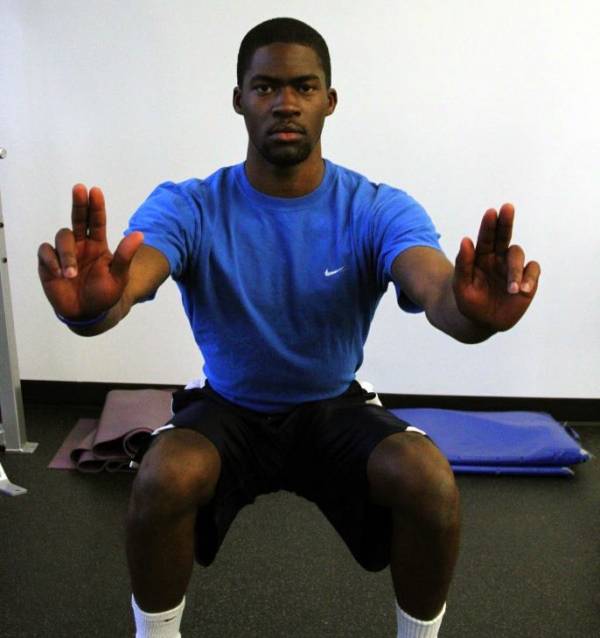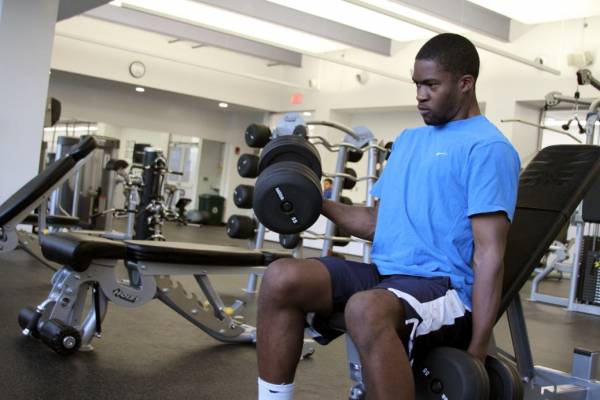When it comes to exercise, people love to pick sides on what is better. Today, I’ll be looking at two different styles of exercise, isometrics and weight training, and seeing which side comes out on top.
When it comes to exercise, people love to pick sides on what is better. Today, I’ll be looking at two different styles of exercise, isometrics and weight training, and seeing which side comes out on top.
Isometrics
Isometrics is largely unknown in comparison to weight training. This is a style of static exercise that involves either holding a position (historically related to martial arts stances) or resisting against an immovable weight (pushing or pulling a metal railing that won’t move). In the world of fitness, isometrics are generally used by Pilates trainers, physical therapists, and lifters.
And in my opinion, most of these people use isometrics incorrectly:
Pilates usually caters to a female audience and often uses isometric exercises with the mindset that it will exercise the body without building muscle bulk.
Thus, isometric exercises are often associated with pastel colored yoga mats and three-pound dumbbells. But many of you already know that females do not grow muscle the same way that males do, so I will save that argument.
Physical therapists use isometrics sparingly for patients with injuries. The isometric exercises are used to maintain muscle function until the patient has healed enough to return to weight training for proper rehabilitation. This is from an incomplete understanding of how isometric exercises function.
Finally, some lifters will use isometrics in the same way that partial training is used. When there are sticking points in their lifts, isometrics will help to strengthen the movement in that range of motion. Otherwise, isometric exercises are rarely seen.
All of these applications are viable, but they show only a moderate understanding of isometrics. Isometric exercise training has a few different applications, two of which are most important: muscle growth and connective tissue training.
Isometrics for Muscle Growth
You can develop muscle using isometric training, but doing so using isometric holds, such as doing a plank or holding a heavy weight until your muscle fatigues, is not the most ideal way. There are active and passive isometrics.
Active isometrics, which involve you exerting force to fatigue your muscle, will develop muscle and strength much quicker than passive isometrics, such as holds and stances.

You can make a hold active by adding tension, such as driving your feet into the ground during a wall sit, rather than just seeing how long you can hold the stance before your legs collapse. This is useful for more than just sticking points because isometric exercises can indeed aid the full range strength.
Think about it this way: when the brain tells a muscle to contract, it only activates certain motor neurons to contract the muscle, but the entire muscle contracts.
Since a heavier object requires more strength, the muscle fires more motor neurons to increase contractile strength, but the whole muscle still contracts. In order for isometric exercises to only strengthen the muscle in a certain range of motion, the muscle would have to contract in parts.
As long as you put forth an appropriate amount of strength, preferably maximal, into an isometric exercise, it can and will strengthen the muscle as a whole.
In fact, many performing strongmen use isometric exercises to develop the strength to bend metal wrenches and scroll pieces of steel with their hands.
Try wrapping two thick pieces of cloth or leather around a wrench and try with maximum force to bend it. You will fatigue your muscles quickly, but you will also find that with practice your hand strength will increase exponentially.
Thus, using maximum tension in isometrics will also save you time, as opposed to doing a hold for hours at a time.
Isometrics for Connective Tissue
In terms of physical therapy, the wrong aspect of isometrics is being viewed. Often, the injuries that require the most rehabilitation are tendon or ligament injuries.
These connective tissues have relatively low blood flow and take much longer to repair. Isometric exercises develop the strength of the tendons more than muscle strength.
So, for physical therapy, isometrics should be utilized more for their tendon strengthening aspect than their muscle maintenance potential. Isometrics are ideal for tendon injuries because there is tension of the tendon but no movement, so the tendon avoids strain.
It is best to do isometric exercises for tendons in the strongest range of the movement.
Someone with elbow tendonitis will want to perform isometric exercises with their arm almost fully extended to have the least possible strain on the tendon.
Bud Jeffries, the first man to squat a thousand pounds from the bottom position, suffered a knee injury while running years ago. Using isometric exercises, he repaired the injury and got back to doing things like 625lb Zercher squats.
Isometrics Versus Weight Training
Weight training emphasizes movement, muscle strength and size, neurological strength, and technique.
I have put technique last, but it is perhaps most important. I have heard attacks on the merits of weight lifting to the effect of, “Squats will hurt your knees,” or, “You can easily tear a muscle.”
You can avoid doing either of those things one of two ways: sitting at home watching television and engaging in no physical activity or using appropriate technique while lifting and knowing your body.
For instance, the squat works the glutes, abs, quadriceps, hamstrings, lower back, and more when done properly. Meaning they are done with the feet shoulder width apart, lifting with the hips instead of the knees, and with the butt back. When done incorrectly, the squat works just the quads, and the weight is lifted with the knees, increasing potential for injury.
Weight training can build incredible strength throughout the body. Doing lifts that emphasize the use of many large muscle groups can encourage muscle growth, often more than isometrics has been commonly shown to do. Furthermore, countless stories of weight loss, health benefits, and community have been attributed to weight lifting.
Is weight lifting better than isometrics? Could isometrics possibly be better than weight lifting? On both counts, no. Find a Shaolin monk who has done isometric exercises for years and can hold an easy two-hour horse stance.
There is an incredibly slim chance that he can squat 500lbs. On the contrary, find a powerlifter who can squat upwards of 500lbs, and he may have trouble holding a horse stance or plank for ten minutes.

Both methods of strength training should be incorporated for someone seeking full fitness. Rather than taking sides, a harmony between the two should be reached.
Just like the Tao symbol, yin and yang are in harmony, and there is a little of each side in both. Isometrics trains stability (connective tissue and nerves), but doing so can also give great benefit to movement.
Weight training develops movement (muscles and nerves), but can give rise to increased stability. Adopting both into your workout menu can make all the difference.
References:
1. Mercer, L. “Does Pilates Start With Isometric Movement?” The Nest. Accessed May 5, 2014.
2. Laskowski, M.D., Edward R. “Are Isometric Exercises A Good Way to Build Strength?” MayoClinic. Accessed May 5, 2014.
3. Bryant, J. “Obliterate Your Sticking Points.” T-Nation. Accessed May 5, 2014..






